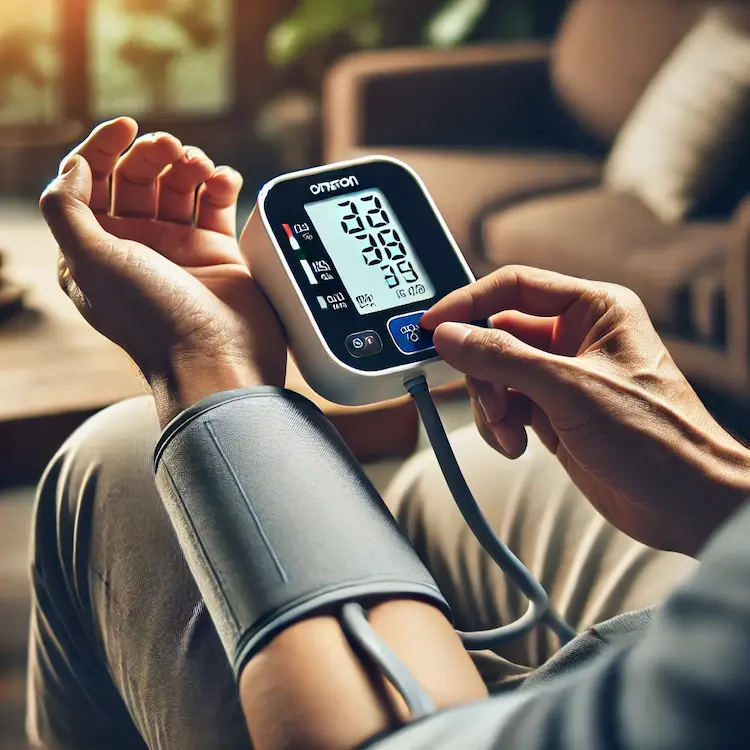Monitoring blood pressure at home is essential for managing hypertension, preventing cardiovascular diseases, and ensuring overall well-being. Omron, a leading brand in medical devices, offers high-quality digital blood pressure monitors, with the Omron M500 vs Omron M6 Comfort debate being a common one among users seeking reliability and performance. Both devices are known for their accuracy, ease of use, and advanced features, but when it comes to durability and longevity, which one lasts longer?
This article provides an in-depth comparison of Omron M500 vs Omron M6 Comfort, evaluating their longevity based on factors such as battery life, build quality, cuff durability, software support, and maintenance requirements. We also explore their health and societal impacts, provide statistical insights, and offer practical tips for extending the lifespan of a blood pressure monitor.
Importance of a Durable Blood Pressure Monitor
A durable blood pressure monitor ensures consistent, accurate readings over an extended period, reducing the need for frequent replacements and additional costs. Key reasons why longevity matters include:
- Cost-effectiveness: A long-lasting device minimizes expenses related to repairs and replacements.
- Reliability: Durable monitors maintain accuracy over time, ensuring precise readings.
- Health Impact: Regular monitoring helps manage hypertension, reducing risks of strokes and heart attacks.
- Environmental Concerns: Less frequent replacements contribute to lower electronic waste.
Understanding the lifespan of these monitors allows users to make an informed decision, ensuring they invest in a model that will serve them well for years.

Comparison: Omron M500 vs. Omron M6 Comfort
| Feature | Omron M500 | Omron M6 Comfort |
|---|---|---|
| Battery Life | ~1,000 readings | ~1,500 readings |
| Power Source | 4 x AA batteries / AC adapter | 4 x AA batteries / AC adapter |
| Cuff Durability | Standard IntelliWrap cuff (22-42 cm) | IntelliWrap Comfort cuff (22-42 cm) |
| Build Quality | Robust plastic casing | Higher-grade materials with ergonomic design |
| Screen Longevity | LCD, backlit | LCD, no backlight |
| Software Updates | Occasional updates via Omron Connect | Limited updates |
| Storage Capacity | 100 readings per user (2 users) | 100 readings per user (2 users) |
| Overall Lifespan | 3-5 years (with maintenance) | 5-7 years (with maintenance) |
Now, let’s break down each aspect in more detail.
Battery Life and Power Efficiency
Both the Omron M500 and Omron M6 Comfort are battery-operated but can also be powered using an AC adapter.
- The Omron M500 lasts for about 1,000 readings before requiring a battery change.
- The Omron M6 Comfort has a slightly longer battery life, capable of 1,500 readings on a single set of AA batteries.
This means that for users who monitor their blood pressure daily, the M6 Comfort requires fewer battery replacements, leading to long-term savings and reduced maintenance.
Practical Tip:
- Use rechargeable batteries or an AC adapter to extend the monitor’s lifespan and minimize electronic waste.
Build Quality and Cuff Durability
The materials and construction of a blood pressure monitor significantly impact its longevity.
- The Omron M500 features a standard IntelliWrap cuff, which is durable but may wear out with frequent use.
- The Omron M6 Comfort uses the IntelliWrap Comfort cuff, which is thicker and more resistant to wear and tear.
Practical Tip:
- Store the cuff properly after each use to prevent cracks or leaks in the tubing.
- Avoid over-tightening the cuff, which can cause premature damage.
Display and Button Longevity
- The M500’s LCD screen is backlit, making it easier to read in low-light conditions.
- The M6 Comfort has a non-backlit LCD, but the display is high-contrast for better visibility.
While backlit screens consume more power, they are often more durable and resistant to fading over time.
Practical Tip:
- Keep the monitor away from direct sunlight and high humidity, which can degrade the screen and buttons.
Software and Calibration Support
Regular calibration and software updates ensure continued accuracy.
- Omron M500 receives occasional updates via Omron Connect, which helps maintain precision.
- Omron M6 Comfort has limited software updates, but its factory calibration is more robust, lasting longer without adjustments.
Practical Tip:
- Check accuracy annually using a calibration service or by comparing readings with a professional monitor at a clinic.
Overall Longevity and Maintenance
The Omron M6 Comfort tends to last longer than the Omron M500 due to:
- Stronger build materials
- More durable cuff
- Better battery efficiency
- Minimal need for recalibration
With proper maintenance, the M500 lasts around 3-5 years, whereas the M6 Comfort can last up to 5-7 years.

Practical Maintenance Tips for Extending Lifespan:
- Store in a dry, cool place to prevent electronic degradation.
- Clean the cuff regularly with a damp cloth to prevent bacteria buildup.
- Use an AC adapter instead of batteries when possible.
- Avoid dropping the device or exposing it to extreme temperatures.
Conclusion
Both the Omron M500 and Omron M6 Comfort are excellent choices for home blood pressure monitoring, but in terms of longevity, the M6 Comfort outperforms the M500. With a stronger build, more durable cuff, and longer battery life, the M6 Comfort is the better investment for users looking for a long-lasting device. If you prioritize a backlit screen and occasional software updates, the M500 might still be a good option, but for those seeking minimal maintenance and extended durability, the M6 Comfort is the clear winner.
Key Takeaways
- Omron M6 Comfort lasts longer (5-7 years) compared to Omron M500 (3-5 years).
- M6 Comfort has a more durable cuff and better battery efficiency.
- Regular maintenance can significantly extend the life of either device.
- Use an AC adapter and store the monitor properly for longevity.
Actionable Recommendations
- Choose the Omron M6 Comfort for long-term reliability.
- Invest in rechargeable batteries or an AC adapter.
- Clean and store the cuff properly to prevent early wear.
- Regularly compare readings with professional devices to ensure accuracy.


